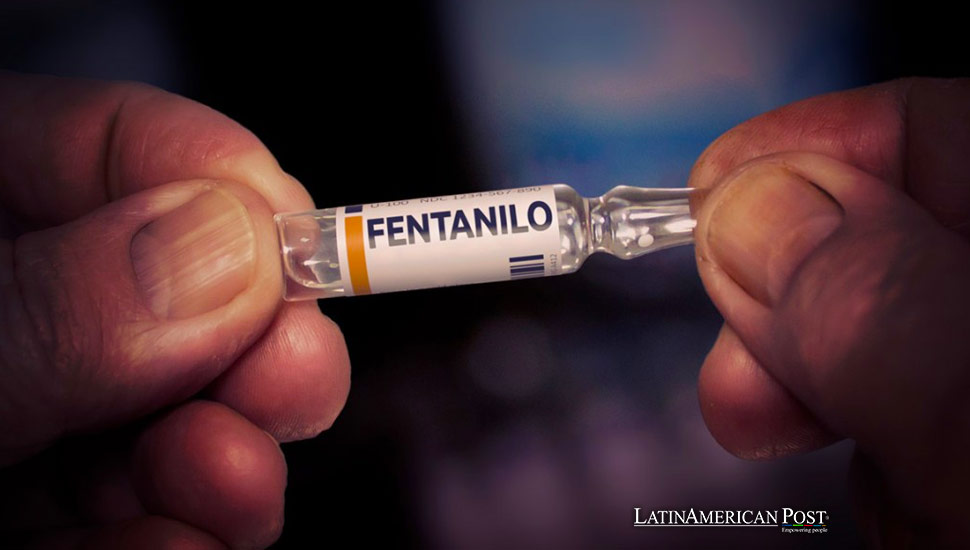Mexico’s Fentanyl Seizures Drop Amid Internal Cartel Conflict and Methamphetamine Focus

Despite the ongoing fentanyl crisis in the United States, Mexico’s efforts to seize the drug have sharply declined. This alarming trend, with a 94% drop in fentanyl seizures, underscores the urgency of the situation and raises questions about the country’s shifting focus to methamphetamines and internal cartel conflicts.
The battle against synthetic opioids, particularly fentanyl, has been a persistent challenge for the United States. Yet, as Mexican-made fentanyl continues to flood across the border, the efforts of Mexican authorities to seize the drug have declined dramatically. This startling 94% decrease in fentanyl seizures in the first half of 2024 compared to the same period in 2023 poses a significant threat to the United States, highlighting a concerning shift in focus within Mexico’s law enforcement priorities and an ongoing struggle with internal cartel conflicts.
From January to June 2024, Mexican federal forces seized only 286 pounds (130 kilograms) of fentanyl, a significant drop from the 5,135 pounds (2,329 kilograms) confiscated in 2023. This decline is particularly alarming given the synthetic opioid’s devastating impact, with approximately 70,000 overdose deaths annually in the United States. Despite increased efforts by U.S. officials to intercept fentanyl at the border, often disguised as counterfeit pills, Mexico’s Army and National Guard appear to have diverted their focus toward seizing methamphetamines.
Refocusing on Methamphetamines
Methamphetamines, widely consumed domestically in Mexico, have become the primary target for Mexican authorities. In 2023, Mexico seized a record-breaking 400 tons of meth, a twelvefold increase from the previous year. This momentum continued into the first half of 2024, with 168 tons of methamphetamines seized. The surge in meth seizures can be attributed to increasing internal disputes between the ‘Mayitos’ and ‘Chapitos’ factions of the Sinaloa cartel, Mexico’s largest meth producer. The conflict between these factions has disrupted drug trafficking routes to the border, potentially reducing the number of fentanyl shipments and leading to the shift in focus towards methamphetamines.
These internal conflicts may have inadvertently aided authorities by providing information on rival meth labs and shipments. However, the rationale behind the dramatic drop in fentanyl seizures remains less clear, especially given the pressure from the United States to curb fentanyl smuggling.
Impact of Cartel Conflicts on Drug Seizures
Mexican security analyst David Saucedo suggests that the ongoing battles between Sinaloa cartel factions could also be affecting fentanyl shipments. The conflict between Mayo Zambada’s faction and the “Chapitos” disrupts drug trafficking routes to the border, potentially reducing the number of fentanyl shipments. The violence and instability within these routes create a risky environment for transporting drugs, which could explain the sharp decline in fentanyl seizures.
Moreover, President Andrés Manuel López Obrador’s administration has maintained an ambiguous stance on Mexico’s role in the fentanyl crisis. López Obrador has previously denied that fentanyl is produced in Mexico, despite evidence and acknowledgment from his officials. This equivocation complicates collaborative efforts with the United States to address the issue and underscores the complexities of Mexico’s internal security dynamics. The administration’s stance, or lack thereof, on the fentanyl crisis is a significant factor in the current decline in fentanyl seizures and the shift in focus towards methamphetamines.
The fentanyl crisis is not just a bilateral issue between Mexico and the United States; it has broader implications for Latin America. Countries across the region are grappling with the impacts of drug trafficking and production, often intertwined with violence and political instability. The production and trafficking of synthetic opioids like fentanyl involve a complex network that includes precursor chemicals imported from China and India, further complicating enforcement and regulatory efforts.
Latin America has long been a battleground in the global war on drugs, with various countries facing unique challenges related to drug production and trafficking. The shift in Mexico’s focus from fentanyl to methamphetamines reflects broader trends in drug consumption and law enforcement priorities across the region. While methamphetamine production is more localized, the trafficking of synthetic opioids like fentanyl has far-reaching consequences, affecting countries well beyond Mexico’s borders.
Future Implications and Challenges
The dramatic decline in fentanyl seizures in Mexico raises significant concerns about the future of drug enforcement efforts in both Mexico and the United States. As cartels adapt and evolve, law enforcement agencies must remain flexible and responsive to emerging trends. The internal conflicts within the Sinaloa cartel exemplify the fluid and dynamic nature of the drug trade, where power struggles and territorial disputes can significantly impact trafficking patterns and enforcement outcomes.
Collaboration between Mexico and the United States remains crucial in combating the fentanyl crisis. The current decline in fentanyl seizures underscores the urgent need for renewed focus and commitment from both nations. Addressing the root causes of drug production and trafficking, including socio-economic disparities and political corruption, is essential for long-term success. This collaboration is not just beneficial but necessary for effectively combating the pervasive influence of drug cartels.
Also read: Joint US-Mexico Military Drill Enhances Disaster Response Coordination
Mexico’s shift in focus from fentanyl to methamphetamines, coupled with internal cartel conflicts, has led to a sharp decline in fentanyl seizures. This trend poses significant challenges for both Mexican and U.S. authorities in their efforts to combat the synthetic opioid crisis. As the dynamics of drug trafficking continue to evolve, so too must the strategies and collaborations aimed at addressing this complex and multifaceted issue. The broader Latin American context underscores the interconnected nature of drug enforcement challenges and the need for comprehensive, region-wide approaches to combat the pervasive influence of drug cartels effectively.





